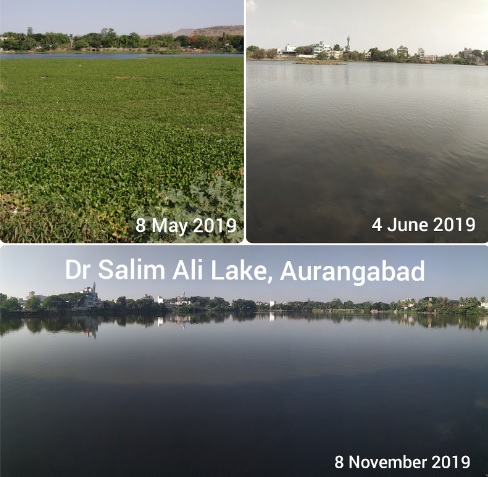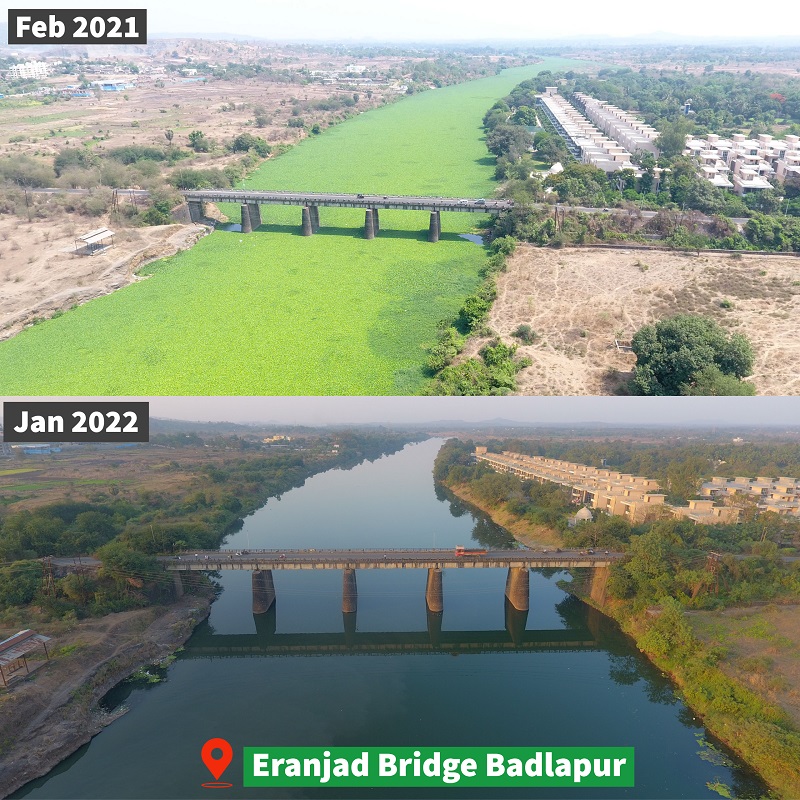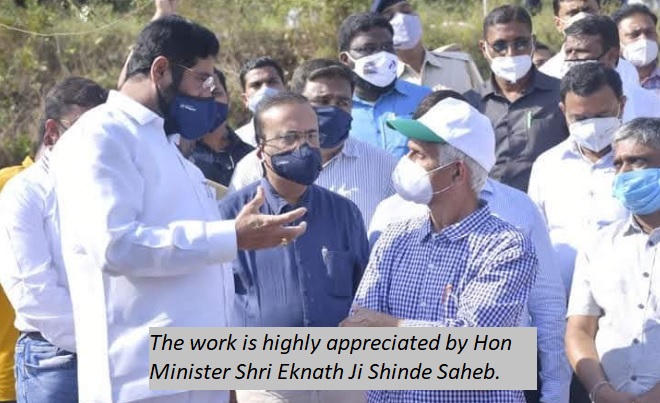Case Studies

Dr. Salim Ali Lake, a prominent 40-acre lake in Chatrapati Sambhaji Nagar, faced severe environmental challenges due to the proliferation of water hyacinth. Because of this significant decline in fish population, and an increase in mosquitoes and foul odors posed a substantial threat to the lake's ecosystem and its surrounding community. Despite numerous attempts and considerable expenditure, traditional methods failed to address these issues effectively.
In May 2019, the Saguna Rural Foundation undertook an innovative approach, employing the Saguna Jalsanvardhan Technique (SJT) over two months. This strategic intervention led to the successful revival of the lake. Remarkably, since the implementation of this project, the lake has remained free from water hyacinth, maintaining its restored ecological balance.
The positive impact of this project was recognized by the Chatrapati Sambhaji Nagar Municipal Commissioner, Dr. Nipun Vinayak, who expressed great satisfaction with the work done by the Saguna Rural Foundation. The transformation of Dr. Salim Ali Lake stands as a testament to the effectiveness of innovative environmental conservation techniques and the dedication of those committed to preserving natural ecosystems.

The village of Ukrul in Karjat, located in the Raigad District, was home to a 2-acre pond that played a crucial role in the daily lives of the local villagers. This pond was not only a source of water for cattle but also a vital spot for fish farming.
Over the past five years, the pond faced a severe ecological challenge due to the rampant growth of water hyacinth, an invasive aquatic plant. This growth severely impacted the pond's ecosystem and usability. The dense mat of water hyacinth hindered water flow, blocked sunlight, and depleted oxygen levels, making it unsuitable for fish farming and cattle watering. The situation escalated to the point where the pond became virtually unusable, adversely affecting the daily activities of the villagers.
Recognizing the critical situation, the Saguna Rural Foundation stepped in to address this environmental issue. The foundation used the Saguna Jalasanvardhan Technique, a method known for its effectiveness in restoring and preserving aquatic ecosystems.
The intervention by the Saguna Jalasanvardhan Technique was a resounding success. The pond was not only cleared of the invasive water hyacinth but was also restored to its former health.



The Ulhas River in Maharashtra, India, faced a critical ecological challenge starting in 2010 due to the widespread infestation of water hyacinth. By 2018, this problem escalated, with a 30 km section of the river entirely engulfed by the water hyacinth. Conventional mechanical methods of removal proved counterproductive, as they inadvertently facilitated the spread of the hyacinth.
In response to this crisis, the Saguna Rural Foundation, in collaboration with local government bodies and community groups, including the notable involvement of the Honorable Guardian Minister of Thane, Shri Eknath Ji Shinde Saheb, and the Thane Collector, Mr. Rajesh Narvekar, initiated an innovative and effective eradication program.
This initiative led to the successful and complete eradication of water hyacinth from the impacted stretch of the river, significantly restoring its ecological balance. This accomplishment is remarkable not only for its scale but also for the collaborative efforts that drove it. It stands as an exemplary model for tackling similar environmental issues and underscores the critical role of multi-stakeholder cooperation in ecological restoration projects.